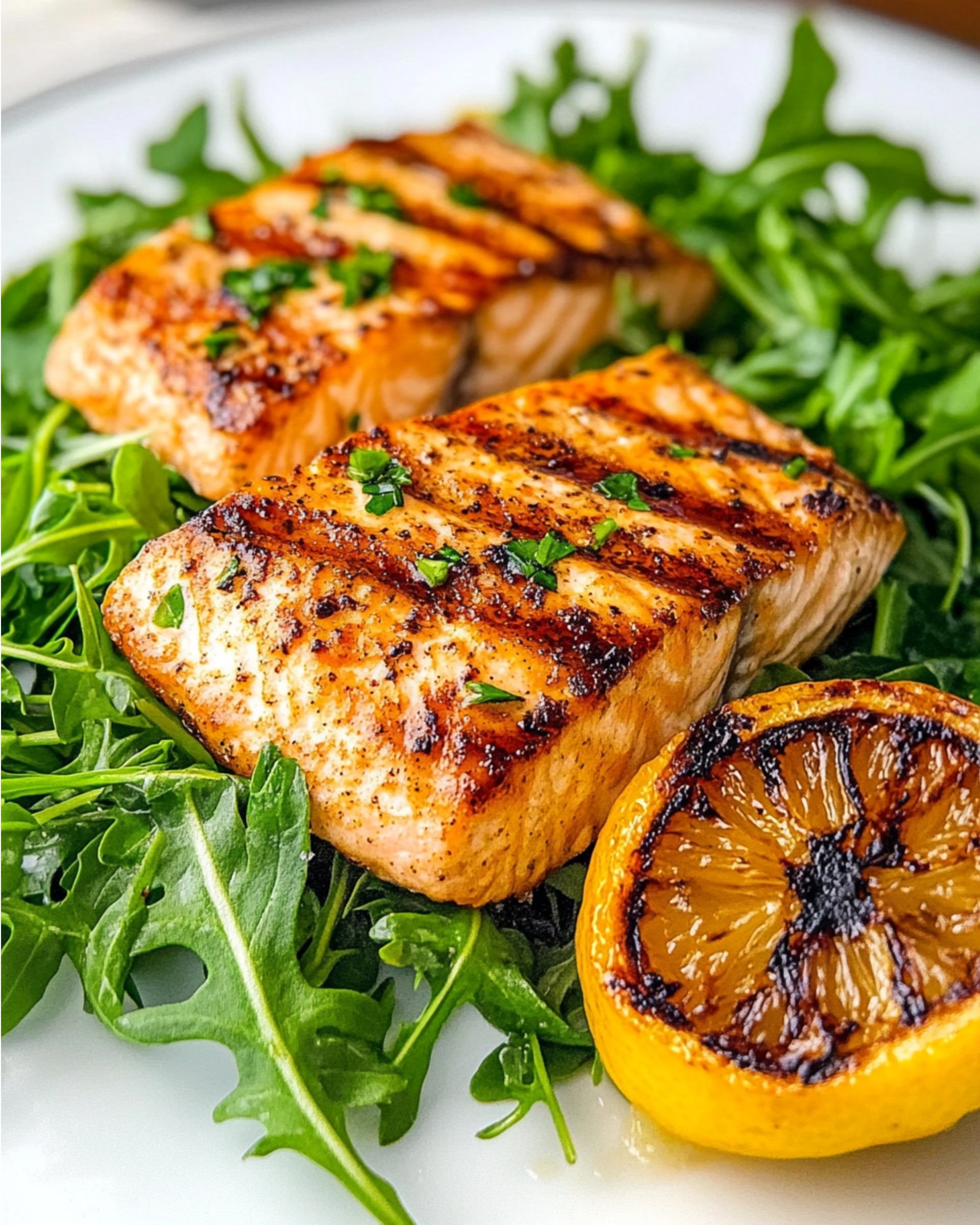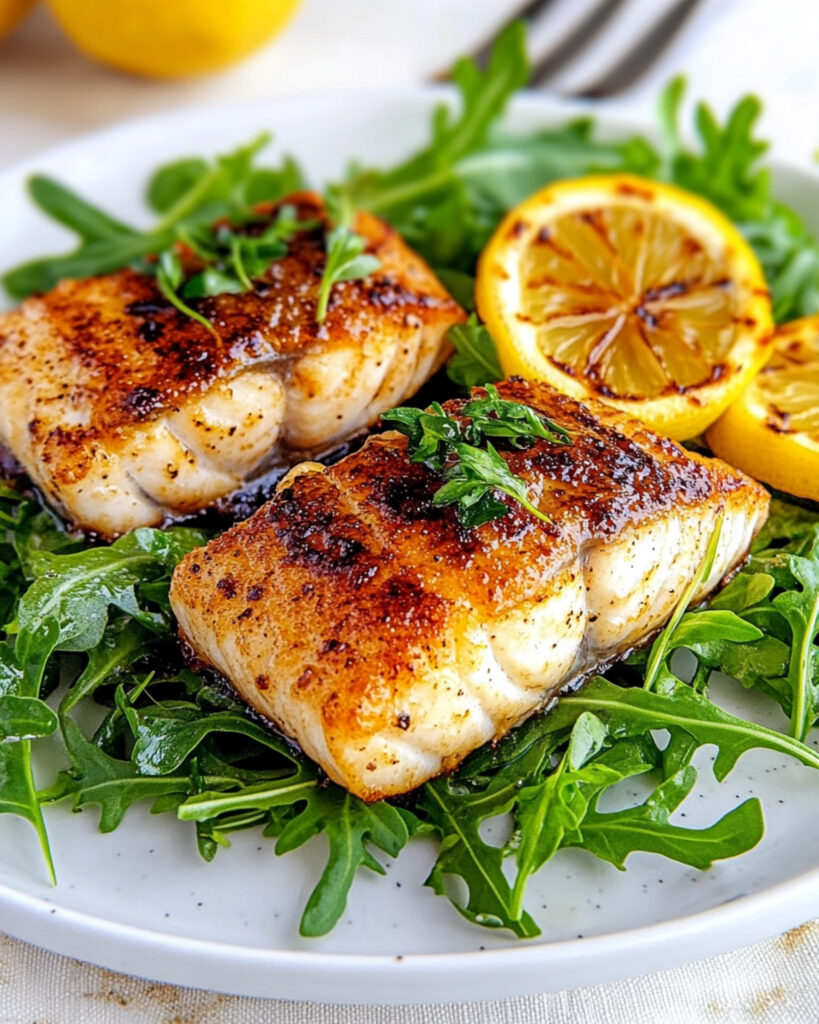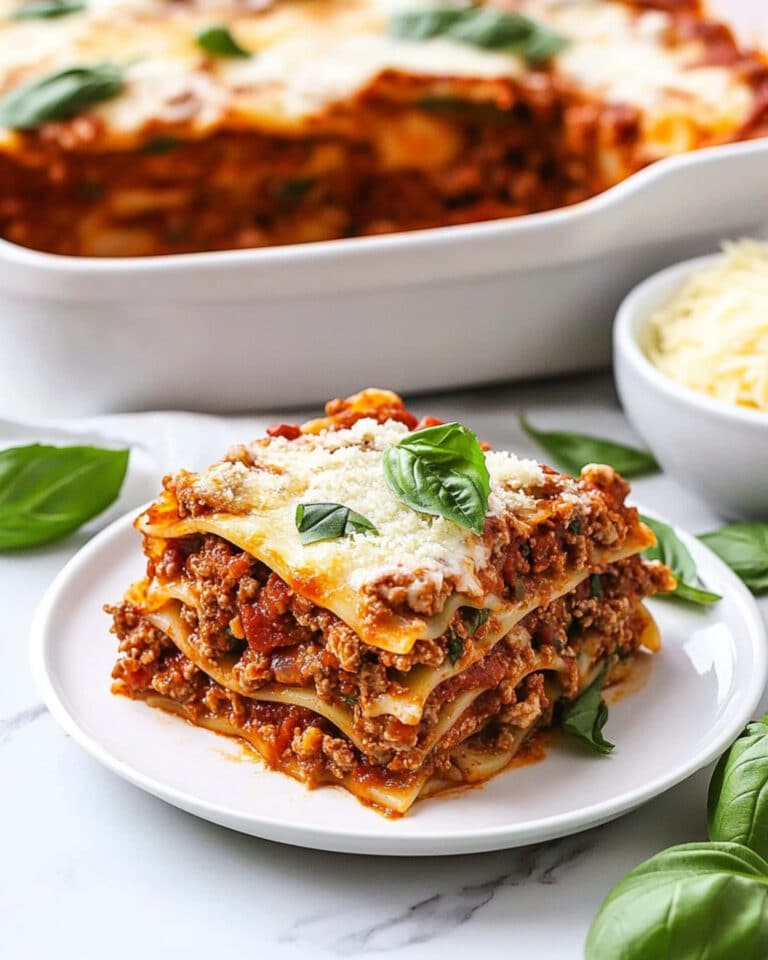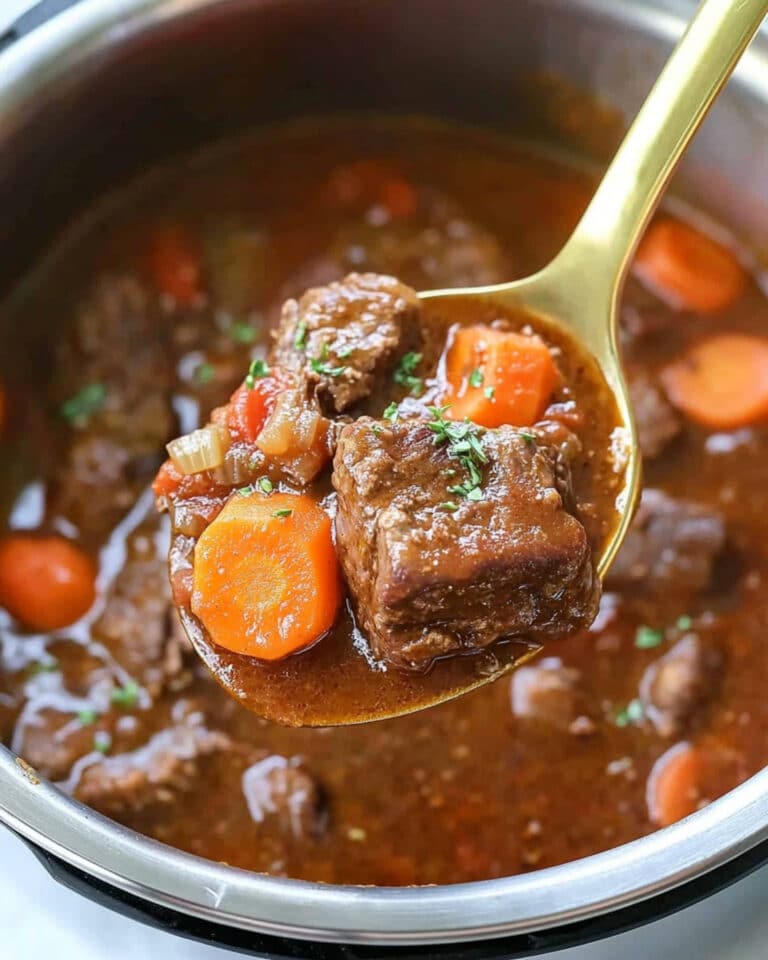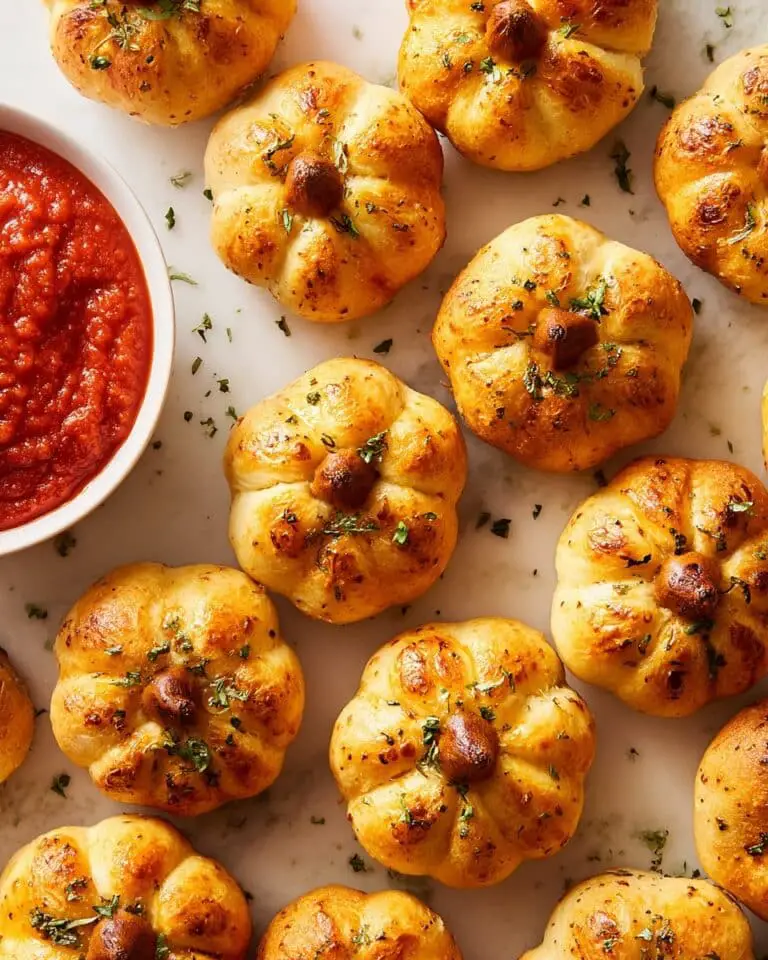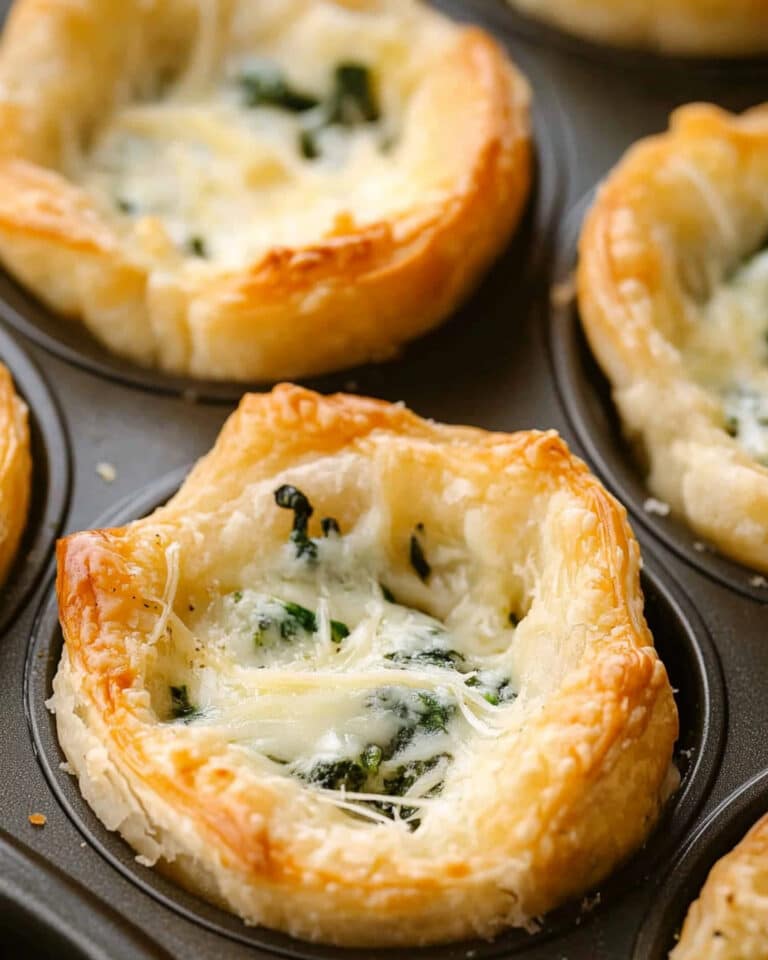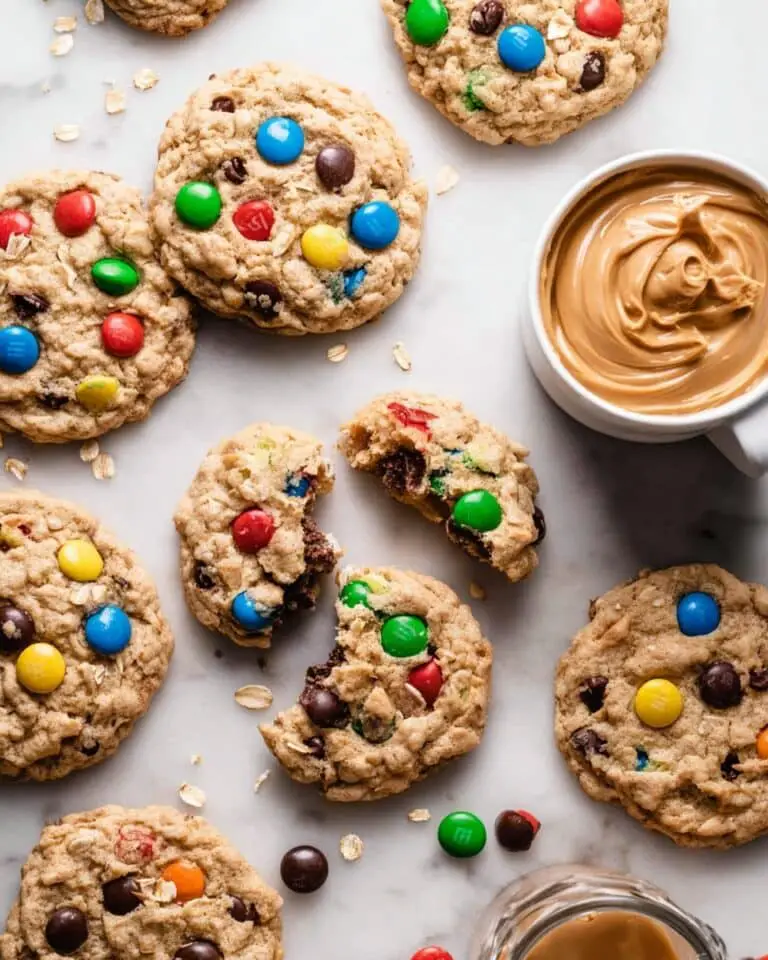These Grilled Korean BBQ Chicken Wings are a flavor explosion that will transform your backyard barbecue into a Korean-inspired feast! Perfectly crispy on the outside, tender and juicy on the inside, and coated with a sweet, sticky, and slightly spicy sauce that will have everyone licking their fingers. This recipe combines the smokiness of the grill with the bold flavors of Korean cuisine for a wing experience you won’t soon forget.
Why You’ll Love This Recipe
- Perfect Party Food: These wings are guaranteed crowd-pleasers at any gathering – whether it’s game day, a summer cookout, or just a weekend treat.
- Balanced Flavor Profile: The sweet, savory, and spicy elements create a perfectly balanced bite that’s addictively good without overwhelming heat.
- Make-Ahead Friendly: The sauce can be prepared ahead of time, making the actual cooking process streamlined and stress-free.
- Grilling Magic: The two-zone grilling method ensures wings that are juicy inside with that irresistible crispy exterior – no deep fryer needed!
Ingredients You’ll Need
- Chicken wings: The star of the show, providing a perfect vehicle for that amazing sauce. Wings have enough fat to stay juicy on the grill.
- Avocado oil: With its high smoke point, it’s perfect for grilling to prevent sticking and burning.
- Chili powder: Adds a touch of heat and depth to both the wings and sauce.
- Gochujang: The Korean chili paste that gives these wings their signature flavor – spicy, sweet, and deeply savory.
- Soy sauce: Provides that umami foundation that makes the sauce so craveable.
- Brown sugar and honey: Create that sticky-sweet coating that caramelizes beautifully.
- Tomato paste: Adds richness and tanginess to balance the sweetness.
- Sesame oil: That distinctive nutty flavor that’s essential to Korean cooking.
- Garlic and ginger paste: The aromatic backbone of the sauce that infuses every bite.
- Lemon juice: Brightens all the flavors with a touch of acidity.
- Red pepper flakes: For an extra kick of heat that tingles but doesn’t overwhelm.
- Sesame seeds and green onions: Not just pretty garnishes – they add texture and fresh flavor.
Note: You’ll find the complete list of ingredients, along with their exact measurements, in the printable recipe card at the bottom of this post.
Variations
Spice Level Adjustments
Increase the gochujang, red pepper flakes, or chili powder for extra heat. For milder wings, reduce these ingredients and add a bit more honey.
Oven-Baked Option
No grill? Bake wings at 425°F on a wire rack over a baking sheet for about 45-50 minutes, turning halfway through. Finish under the broiler for crispiness.
Air Fryer Method
Cook seasoned wings in batches at 380°F for 12 minutes, flip, then another 12 minutes. Toss with sauce after cooking.
Flavor Twists
Add a tablespoon of rice vinegar for tangier wings, or mix in some orange zest for a citrusy variation.
How to Make Grilled Korean BBQ Chicken Wings
Step 1: Prepare the Grill
Set up your grill with two temperature zones – one high heat and one low. Lightly oil the grates to prevent sticking. This dual-zone setup is crucial for perfectly cooked wings.
Step 2: Season the Wings
Pat the wings dry thoroughly with paper towels (this helps them get crispy). In a large bowl, toss them with avocado oil, chili powder, salt, and pepper until evenly coated.
Step 3: Start with Indirect Grilling
Place the wings close together on the cooler side of the grill. Cook for about 1 hour, turning every 10 minutes. Keeping them clustered creates steam that helps maintain juiciness.
Step 4: Make the Sauce
While the wings cook, combine all sauce ingredients in a small saucepan. Bring to a simmer, cook for 5 minutes while stirring frequently, then remove from heat.
Step 5: Crisp the Wings
Once wings reach 165°F internally, move them to the high heat zone. Grill for 3-5 minutes, turning frequently until the skin crisps up and they reach at least 175°F internally.
Step 6: Sauce and Serve
Transfer the crispy wings to a large bowl, pour the sauce over them, and toss until thoroughly coated. Garnish with sesame seeds and sliced green onions before serving.
Pro Tips for Making the Recipe
- Dry Wings = Crispy Wings: Pat them really dry before seasoning. Any moisture will create steam and prevent crisping.
- Keep the Lid Closed: Every time you peek, heat escapes. Trust the process and check only when turning the wings.
- Sauce After Grilling: Never add the sauce while grilling or you’ll end up with burned, sticky wings and a messy grill.
- Temperature Testing: Use a reliable meat thermometer. Wings are best at 175-180°F when they’re falling-off-the-bone tender.
- Cluster Technique: Keeping wings close together on indirect heat is the secret to juicy results. Don’t spread them out until the crisping stage.
How to Serve
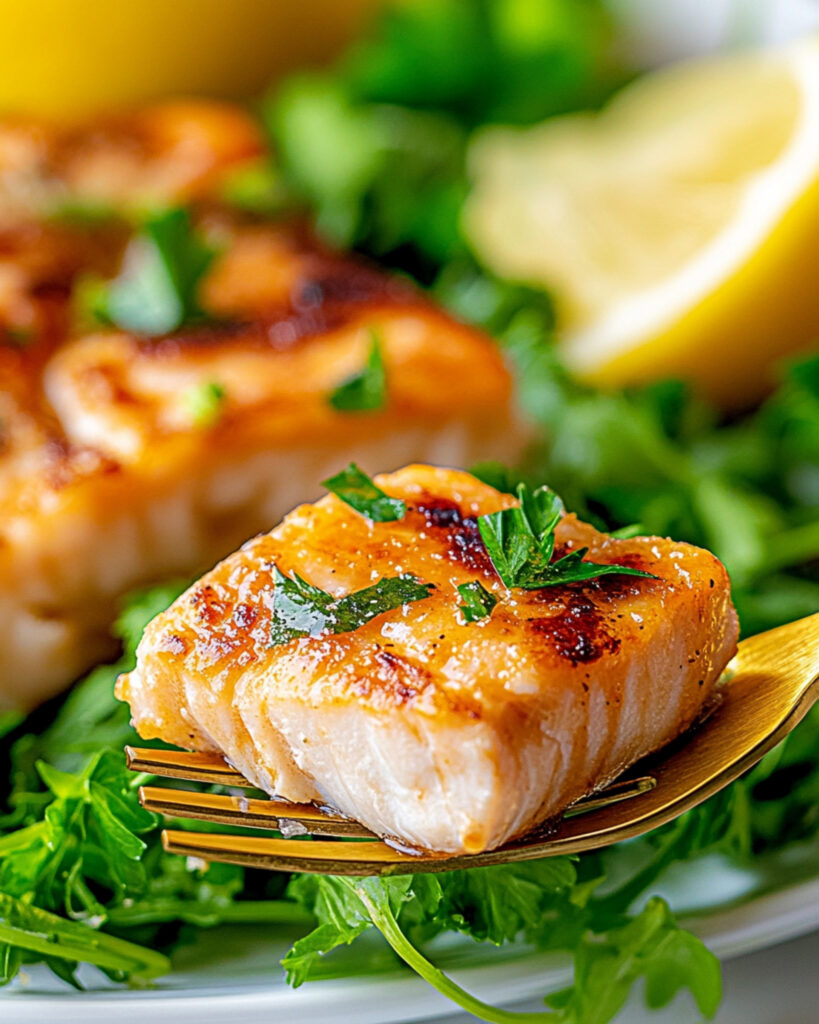
Perfect Pairings
These wings pair beautifully with cold, crisp cucumber salad, kimchi, or a simple Asian slaw with rice vinegar dressing to cut through the richness.
Make It a Meal
Turn this into a Korean-inspired feast by serving alongside steamed rice, lettuce wraps for making ssam, and banchan (small side dishes) like pickled vegetables.
Dipping Options
While these wings are saucy enough on their own, a side of cooling ranch or a tangy yogurt-based dip can be a nice contrast to the spice.
Make Ahead and Storage
Storing Leftovers
Refrigerate leftover wings in an airtight container for up to 3 days. The flavor actually develops nicely overnight!
Freezing
These wings freeze surprisingly well. Store in a freezer-safe container for up to 2 months. For best results, freeze them before adding sauce.
Reheating
For crispy reheated wings, place them on a wire rack over a baking sheet in a 350°F oven for 15-20 minutes. Avoid microwaving if you can, as it makes the skin soggy.
FAQs
-
Can I use frozen chicken wings for this recipe?
Yes, but thaw them completely and pat them very dry before cooking. Frozen wings that aren’t properly thawed will steam rather than crisp up, and they won’t absorb the seasonings as well. Add about 10-15 minutes to your cooking time if starting with previously frozen wings.
-
What exactly is gochujang and can I substitute it?
Gochujang is a fermented Korean chili paste that provides complex sweet, savory, and spicy flavors. While there’s no perfect substitute, you can mix 2 tablespoons of red pepper flakes with 1 tablespoon of miso paste, 1 tablespoon of honey, and a dash of soy sauce to approximate the flavor profile.
-
How can I tell when the wings are done without a meat thermometer?
Without a thermometer, look for wings that are no longer pink at the bone when you cut into one. The meat should pull away from the bone easily, and the juices should run clear. However, investing in a meat thermometer is recommended for perfect results every time.
-
Can I make these wings less spicy for kids or spice-sensitive guests?
Absolutely! Reduce the gochujang to 2 tablespoons and omit the red pepper flakes entirely. You can also increase the honey slightly to balance the reduced spice with more sweetness. Have a separate spicier dipping sauce on the side for those who want more heat.
Final Thoughts
These Grilled Korean BBQ Chicken Wings bring together the best of both worlds – the irresistible appeal of crispy chicken wings and the bold, complex flavors of Korean barbecue. The two-zone grilling method might take a little longer than simply throwing wings on high heat, but the juicy, tender results are absolutely worth it. Whether you’re hosting friends for the big game or just treating yourself to something special, these wings deliver maximum flavor with minimal fuss. Trust me – once you try them, regular buffalo wings might just take a backseat in your recipe collection!
Print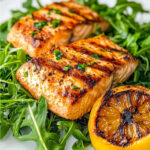
Grilled Korean BBQ Chicken Wings Recipe
- Prep Time: 5 minutes
- Cook Time: 10 minutes
- Total Time: 15 minutes
- Yield: 2 servings
- Category: Main-course
- Method: Grilling
- Cuisine: American
- Diet: Gluten Free
Description
This Grilled Mahi Mahi recipe combines tender, flaky fish with bold seasoning for an effortless, flavorful dish. Perfectly cooked on the grill, it is brushed with melted butter for a richness that elevates the dish to restaurant-quality. Ready in just 15 minutes, this recipe is great for a fast yet impressive meal. Serve with grilled lemon wedges for a zesty, smoky touch.
Ingredients
For the Fish
- 2 (6 oz.) Mahi Mahi fillets
- 1 tablespoon olive oil
For the Seasoning
- 1/2 teaspoon kosher salt
- 1/4 teaspoon garlic powder
- 1/4 teaspoon onion powder
- 1/4 teaspoon smoked paprika
- 1/4 teaspoon black pepper
Additional
- 1 tablespoon unsalted butter, melted
- Fresh chopped parsley (optional garnish)
- Lemon wedges (optional for serving)
Instructions
- Prepare the Fish
Place the Mahi Mahi fillets on a sheet tray and brush all sides generously with olive oil. Set aside while you prepare the seasoning blend. - Mix the Seasoning
In a small bowl, combine kosher salt, garlic powder, onion powder, smoked paprika, and black pepper. Rub the seasoning mixture evenly over the top and sides of the fillets, ensuring full coverage for maximum flavor. - Heat the Grill
Preheat your grill to medium-high heat and oil the grates to prevent sticking. Once the grill is hot, place the Mahi Mahi fillets flesh side down on the grates. - Grill the Fish
Grill the fish for 3 to 5 minutes per side, flipping only once to keep the fillets intact. For well-done fish, check the internal temperature to ensure it reaches 165°F. Medium-rare Mahi Mahi can be cooked to around 140°F-145°F if preferred. - Add Finishing Touches
Immediately after grilling, brush the tops of the fillets with melted butter for added moisture and flavor. Serve the fish hot, garnished with optional fresh parsley and a side of grilled lemon halves for a smoky citrus boost.
Notes
- Grilling the Mahi Mahi with the skin on helps the fish hold together during cooking. While the skin is usually not eaten due to its chewy texture, you can remove it just before serving if preferred.
- Do not skip using the full seasoning mixture—it ensures the fish is flavorful and well-seasoned.
- For a delicious smoky citrus complement, grill a halved lemon alongside the Mahi Mahi. Brush the lemon halves with olive oil and sear them directly on the grill grates until golden brown.
- Mahi Mahi is versatile and can be cooked to medium-rare if preferred, but it is commonly enjoyed well-done with a firm, flaky texture.
Nutrition
- Serving Size: 1 fillet
- Calories: 200
- Sugar: 0g
- Sodium: 450mg
- Fat: 13g
- Saturated Fat: 4g
- Unsaturated Fat: 9g
- Trans Fat: 0g
- Carbohydrates: 1g
- Fiber: 0g
- Protein: 22g
- Cholesterol: 70mg

